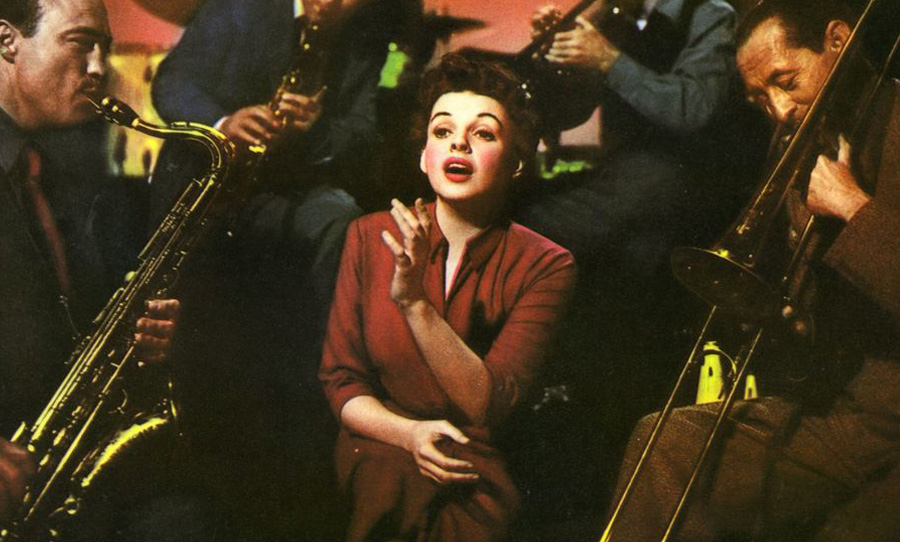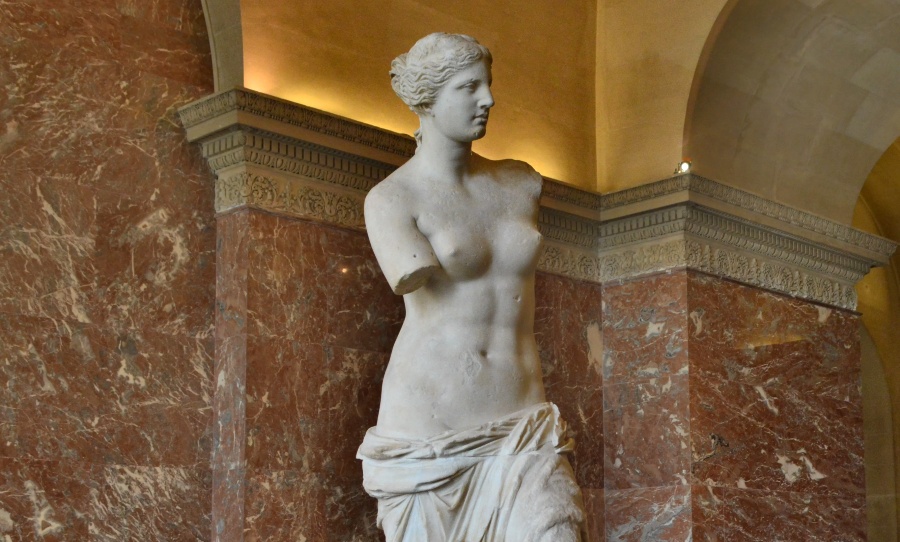Judy Garland was personality and talent on the grand scale. Classic film star, singer, and gay icon, she created amidst the chaos of her life.
Judy Garland was an emblematic star of her time. She was tender and endearing, yet savage and turbulent — accompanied with a wonderfully earnest, expressive voice that would see her be the among the greatest belters of our time.
From her childhood performances to her concert appearance at Carnegie Hall, Garland was a talent into whom the mass audiences projected their hopes and admiration. However, while her gingham-dressed alter ego had “troubles melt like lemon drops”, Garland’s personal tribulations snowballed into larger affairs: she lived in stardom but was plagued with tragedy.
Judy Garland’s story illuminates the dark side of life in the spotlight and dispels any sentimental illusions about the glories of show business in Hollywood’s classical age.

The Gumm Sisters and the real ‘Wicked Witch of the West’
Judy Garland (her birth name was Frances Ethel Gumm) was born on June 10 1922 in Minnesota, to two vaudeville parents who didn’t want her.
Frances Gumm grew up in a tumultuous household, she recalled her parents constantly separating and getting back together, and her father spent most of Frances’ youth engaged in extramarital affairs. In an attempt to cover cheating scandals that pervaded the Gumm family, Ethel quickly tried to shape her daughters into young stars.
Frances made her first appearance on stage aged two. By seven, she had joined the successful signing and dancing act her older sisters had cultivated (called ‘The Gumm Sisters’), all at the insistence of her mother. The sisters reinvented themselves to be the more whimsical ‘Garland Sisters’ after a theatre accidentally credited them as the ‘Glum Sisters’ for a show.
At age 12, Frances Ethel Gumm faded from existence, and Judy Garland was born.
To look at this on the surface, the Gumm’s were a sweet vaudeville family who took their talent to stages all across California. However, Judy Garland’s life was no fairytale, and there was a much darker truth that lurked beneath the bright costumes and dance numbers.
In later interviews, Judy Garland would reveal that “the only time I felt wanted when I was a kid was when was on stage performing”. ‘The Garland Sisters’ act was the family’s primary source of income, and Ethel often threatened Garland to “get out there and sing or I’ll wrap you around the bedpost and break you off short.”
Before she was ten years old, Garland’s mother was giving her pills to improve her performance: ‘uppers’ to give her energy and ‘downers’ to help her sleep.
Judy Garland referred to her mother as “the real Wicked Witch of the West.”
The girl-next-door at MGM: an adult’s voice in a child’s body
Of her sisters, Judy Garland stood out because of her extraordinary singing abilities — she had an adult’s voice in a child’s body.
Garland has often been quoted stating she had never taken singing lessons in her youth, which isn’t technically true. Her father, Frank Gumm “gave me my first singing lessons. They started about the time I learned to talk […] he told me to put all my enthusiasm into a song. Doing that would make the audience like me, he said, even if they didn’t like the song.”
When Garland was 13 she was offered a recording contract with Metro Goldwyn Meyer (MGM), which was one of the world’s biggest film studios at the time. According to Hollywood legend, studio boss Louis B. Mayer signed her on the spot without a screen test.
At MGM she received singing mentorship with Hollywood composer Roger Edens, who trained her voice by writing little arrangements, rather than making her do scales. Garland credited him for not only teaching her intonation and how to control her big vibrato but how to communicate: “It was Roger who taught me how to feel a song”.
At MGM, Garland was marketed as the ‘ugly duckling’. Her storylines on-screen reflected a girl-next-door trajectory, which she often did alongside Mickey Rooney’s all-America-boy act. At this point, MGM decided she was “not sexy enough…not pretty enough”. In an episode of You Must Remember This, author Anne Helen Peterson described Garland as “an avatar for the rejected…because she didn’t look like the rest of the glamorous MGM stars”.
Keep in mind, all this was decided about Judy Garland when she was just thirteen years old.
“Actors live in a queer sort of double world. Not many of us have the names or identities we were born with. I don’t associate Frances Gumm with me — she’s a girl I can read about the way other people do. I, Judy Garland, was born when I was 12 years old”, Judy Garland told the Minneapolis Sunday Tribune in 1951.
Studio executives decided Judy Garland was overweight and took it among themselves to restrict what she ate. Rumours say she was only given chicken broth and cottage cheese to eat on set. When she tried to order her own lunch, her requests were overridden.
As one of MGM’s young stars, she was forced to adopt a gruelling, almost impossible schedule. She would be contracted onto two or three movies at a time — sometimes finishing shoots at five in the morning.
It was widely reported that MGM used drugs to modulate the performances of their young stars on set. Garland was not exempt from this, and was prescribed ‘pep’ pills or amphetamines to power through the exhausting demands of a shoot, and then ‘downers’ or barbiturates to ensure she slept through the night. These were the same pills Garland’s mother had given her as a child. She was sustained by a diet of pills, and Garland became completely drug dependant by age 15.
By this point, Garland was worlds away from her old self. Her lifelong struggle with addiction, body image and mental health had already begun, fueled solely by MGM’s resolve to mould her into a profitable box office star.
“Toto, I’ve a feeling we’re not in Kansas anymore”
At age 16, Garland was cast in the most culturally important and successful movie of all time. You can see her now without me even mentioning the title of the film: braided pigtails, blue gingham dress, ruby red slippers.
Just as a wonderstruck Dorothy was swept away into a magical, Technicolour world of Oz, Garland was plucked from obscurity to become a symbol of Hollywood and cultural icon. But becoming a symbol at 16 proved to be corrosive.
In Over the Rainbow Garland sings with an already perceptible nostalgia for the paradise lost of a childhood she never had — the notes in the section “someday I’ll wish upon a star” even mimics a child’s piano exercise. Over the years, Garland would interpret Over the Rainbow differently by changing the timbre, tone, phrasing, diction and tempo. She learned to adapt the song to communicate how she was feeling.
The lead up to making the 1939 classic was a far more treacherous landscape for the teenager to navigate than the fictional perils of Oz. As she was not the first choice for the role of Dorothy, the studios took extreme measures to make her big-screen ready. She wore restrictive corsets to give her body a more childlike look, was put on a daily diet of chicken soup, black coffee, 80 cigarettes and diet pills to keep her slim and, of course, amphetamines for energy and barbiturates for sleep.
While enduring this, Garland was also severely mistreated on set. Her co-stars were jealous they were being upstaged by a teenager. Ironically her only friend on set was Margaret Hamilton, who played the Wicked Witch of the West.
Later, Garland would reveal she was sexually harassed by several studio executive members, including Louis B. Mayer, who groped her and propositioned her for sex. When Garland rejected his advances, Mayer cried and threatened to ruin her career by telling her, “I’ll break you if its the last thing I do.” (Get Happy: The Life of Judy Garland)
By the time the film was released, Garland was catapulted into such a state of stardom that she never found time in her schedule to see the film in theatres. She was made to celebrate her 17th birthday two months early, as that was the only time she could fit into her schedule and was forbidden from eating her own birthday cake.
Get Happy: reborn on the stage
In the mid -’40s — and now a Hollywood icon — Garland began accepting larger ‘leading lady’ roles (like in Meet Me in St. Louis and The Clock) and reintroduced stage performances into her repertoire.
When she took to the stage, Garland knew how to belt with the best of them, she could be brassy like Sophie Tucker or powerful like Ethel Mermen. Her versions of When You’re Smiling or Zing! Went the Strings of My Heart could put an audience into a state of universal hysteria. In 1952 she did a record-breaking nineteen-week stand at the Palace Theatre in New York City, which was called “one of the greatest personal triumphs in show business history” and earned her a Special Tony Award for The Revival of Vaudeville.
There was passion in her performances, a lust for life as well as an agony of dissatisfaction and incompletion. She was dangerously exposed when she was on stage: audiences adored her for what she gave and what she risked.
Judy Garland was an athletic singer. She could sing a whole concert, then go to a party and sing around a piano until the early hours of the morning. This strength was largely thanks to the intense vocal conditioning she had undergone in her youth.
Her voice would fill theatres, and she sang on a daily basis for decades. Audience members who had seen her perform as ‘The Garland Sisters’ said it was “loud! It blasted out in that theatre without a microphone…we loved it” (Judy Garland: A Portrait in Art and Anecdote). Her vocal cords were essentially in marathon condition, meaning they would be able to withstand more than a beating before beginning to swell and making her voice hoarse.
This talent was carried into her fierce and unsparing performance in the 1954 remake of A Star Is Born. According to her husband at the time Sidney Luft, she worked “incredibly hard” and had been clean for some months before the shoot.
However, when the film fell behind its shooting schedule Garland was put back on the drugs.
During A Star Is Born her pill use spiked, she became erratic and unpredictable onset. Her marriage to Sidney Luft fell apart, and over the next few years, she suffered from nervous breakdowns and attempted to take her own life. Eventually, she terminated her contract with MGM.
A friend of Dorothy
In Garland’s audiences, gay men were heavily represented. Gay magazine The Advocate called Garland the “Elvis of Homosexuals” and ‘Friend of Dorothy’ became a common code phrase for closeted gay men.
To many gay men, Garland is the mother of all icons. In a 1969 review of her Palace Theatre show, Esquire Magazine realised: “Homosexuals tend to identify with suffering. They are a persecuted group and they understand suffering. And so does Garland.”
And Garland suffered. She was at war with her own body, something that many gay men deeply understood. Her romantic cravings and serial humiliations were theirs. It was as if she sang The Man That Got Away just for them. Her life tells a story of survival, of someone trying to assert some form of control in a world that was set up to destroy her.
Garland’s tragic and untimely death contributed heavily to her status as a gay icon. On the day of her funeral, gay men lined the streets and wept for her — it was “permission to be gay in public for once“.
Popular lore claims that heightened emotions surrounding Judy Garland’s death contributed to the Stonewall Riots, which happened the same night as her funeral. Trans activist Sylvia Rivera, who rebelled alongside Marsha P. Johnson that night, recalled thinking “it’s the end of an era. The greatest singer, the greatest actress…there’s no one left to look up to.” (Stonewall, 1994)

“The first bring the drag king threw/ To draw blood from the boy in blue/ Said ‘Here Les Judy Garland’ on it/ It flew through historic air.” — The Magnetic Fields in ’69 Judy Garland.
Singing Over the Rainbow one final time
On March 25 1969, as Judy Garland reached the crescendo of Over the Rainbow at a concert in Copenhagen, audiences had no idea they were watching her final live performance.
Over the Rainbow became a tragic anthem. Sung in an eerily slow tempo, the song accumulated more and more meaning until it broke the audience’s heart. It was a dirge for artistic opportunities squandered and personal happiness lost.
Judy Garland died on 22nd June 1969 after accidentally overdosing on barbiturates — the drugs her mother and MGM had prescribed her since childhood. One of the headlines reporting her death read “Judy’s voice stilled. The rainbow is gone.”
Her life as a byproduct of the Hollywood machine was impossibly hard. She freely admitted in 1967: “do you know how difficult it is to be Judy Garland? And for me to live with me? I’ve had to do it, and what more unkind life can you think of than the one I’ve lived?”
“She let her guard down. She didn’t die from an overdose. I think she just got tired.” Her daughter Liza Minelli told TIME in 1972. “She lived like a taut wire. I don’t think she ever looked for real happiness because she always thought happiness would mean the end.”



